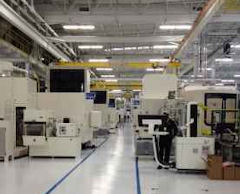Virginia’s economic developers expect a wave of manufacturing and logistical investment when the Panama Canal expansion is complete. Opportunities this big, they say, come along only once in a generation.
by James A. Bacon
New mega-industrial parks and a proposed $1.8 billion highway could help create a world-class economic development asset in an unlikely corner of Virginia: the sparsely populated peanut country between Petersburg and Suffolk. Traversing farms, woodlands and hamlets, the 55-mile corridor has the potential to become one of the major sources of economic growth for Virginia in the decade ahead.
That assessment comes from Liz Povar, director-business development for the Virginia Economic Development Partnership. “We see this as the future of Virginia,” she says. “That’s a big statement — and I’m serious about it.”
The completion of the Panama Canal expansion by 2014 or 2015 represents a historic opportunity for Virginia, according to Povar, an economic development professional whose career spans a half-dozen or more Virginia governors. A third, wider lock in the canal will allow massive vessels holding 18,000 TEUs – four times the capacity of existing ships – to traverse Panama, diverting significant traffic from West Coast Ports. At present, Hampton Roads is the only East Coast port with channels deep enough to receive those deep-draft ships, giving Virginia a first-mover advantage in capturing the anticipated surge in traffic before other ports can make needed investments.
The growth in container shipments will be a boon to the Port of Virginia, of course. But the McDonnell administration hopes to leverage the traffic into massive new investment in logistics facilities and advanced-manufacturing complexes whose supply chains run through the ports. Economic developers are gunning for economic game-changers that bring a network of suppliers in their wake — like aerospace giant Rolls Royce, which in 2007 announced investments potentially reaching $500 million in Prince George County.
The VEDP, the port and local industrial development authorities have seen this opportunity coming for some time. But not until the McDonnell administration have all the stakeholders coordinated efforts, plotted a cohesive strategy and backed it up with substantial state funding, says Povar. The state has committed $500 million in public dollars to build the new U.S. 460 connector, created tax incentives to stimulate port activity and, awaiting the governor’s signature, enacted tens of millions in tax credits for companies investing in a new development zone. Meanwhile, state officials across agencies and secretariats are partnering to “reach out to selected companies that can utilize the assets of a strong logistics network,” she says. Sussex, Southampton and Isle of Wight counties are creating giant industrial parks that will provide enough acreage for the biggest facilities.
This emerging vision for the future of downstate economic development has yet to spread beyond the stakeholders involved. The only piece of the plan to occasion much debate is the U.S. 460 connector, which is said to provide a critically needed alternative to the overloaded Interstate 64 out of Hampton Roads. Smart Growth advocates question the economics of a highway project that requires such a massive public investment, while some Hampton Roads officials would prefer to see the $500 million steered to transportation priorities closer to the urban core. But no no one has yet disputed the premise that an economic boom could be in the offing.
If the mega-sites succeed in attracting OEM manufacturers, they potentially could account for $5.26 billion in direct, indirect and inducted economic output accounting for 8,300 jobs, according to a recent report by Chmura Economics & Analytics.
And that’s just on the manufacturing side. Between Virginia’s ports, double-stacked CSX and Norfolk Southern rail service extending to the Midwest and Southeast, and connections to Interstates 95 and 85, Povar says that southeastern Virginia has what it takes to become a world-class logistical center. She sees the region growing into a warehouse-distribution node comparable to a half dozen clusters around the country like Alliance Park near Fort Worth, Tex., the FedEx complex in Memphis, Tenn., and the port and logistics activities around Long Beach, Calif.
The economic boon will extend beyond the Petersburg-Suffolk corridor. Industrial sites on I-95, I-85 and U.S. 58 could come into play. “We’ve got under public control more than 5,000 acres and 2.5 million square feet of existing buildings that could be used for advanced manufacturing and logistics/distribution,” says Povar. “We have over 22 publicly controlled industrial parks with water, fiber, sewer and zoning. … All of those combined, once they are packaged and marketed in an aggressive and sustained way, can help make Virginia a world-class logistics headquarters.” Read more.





